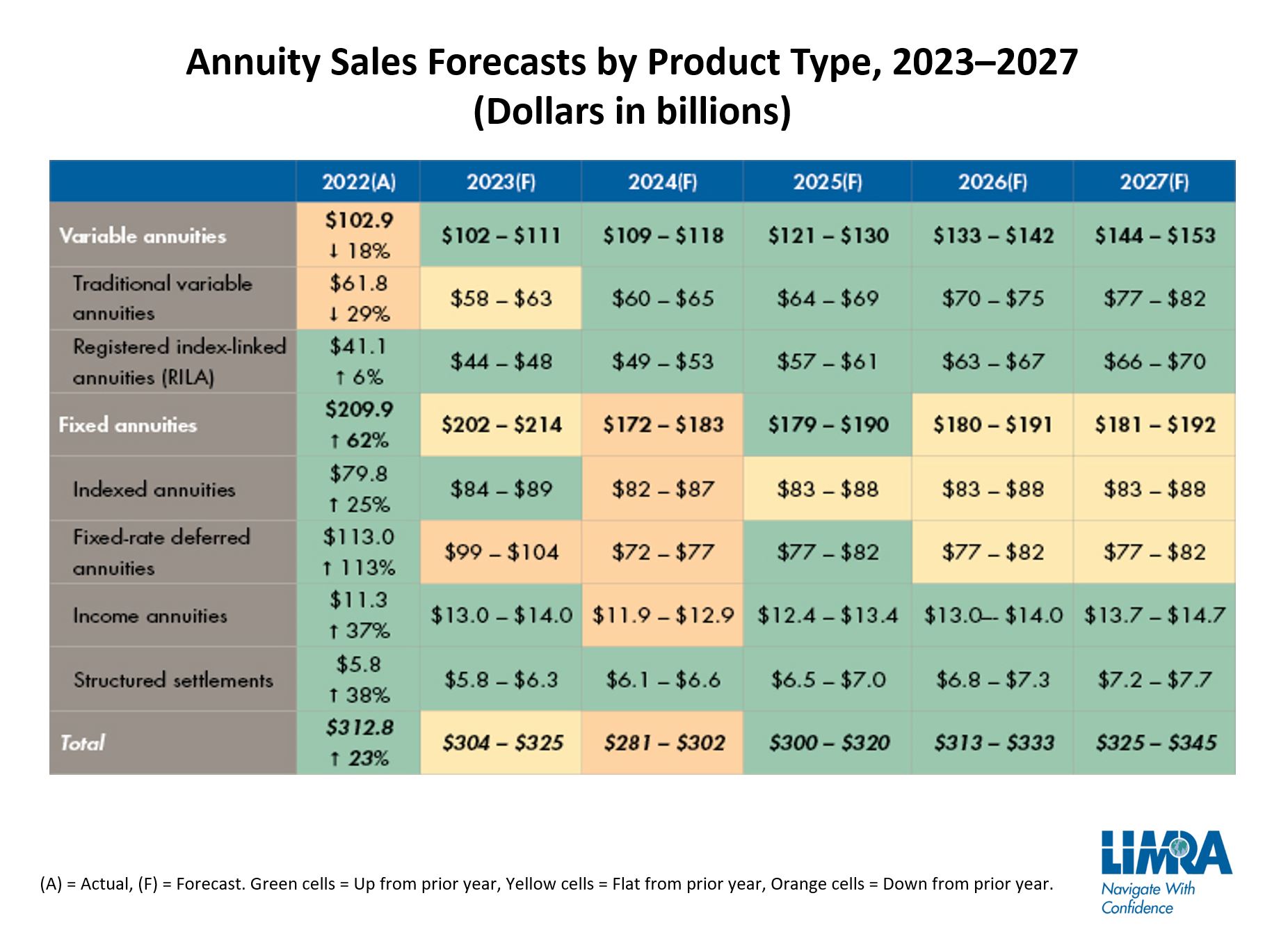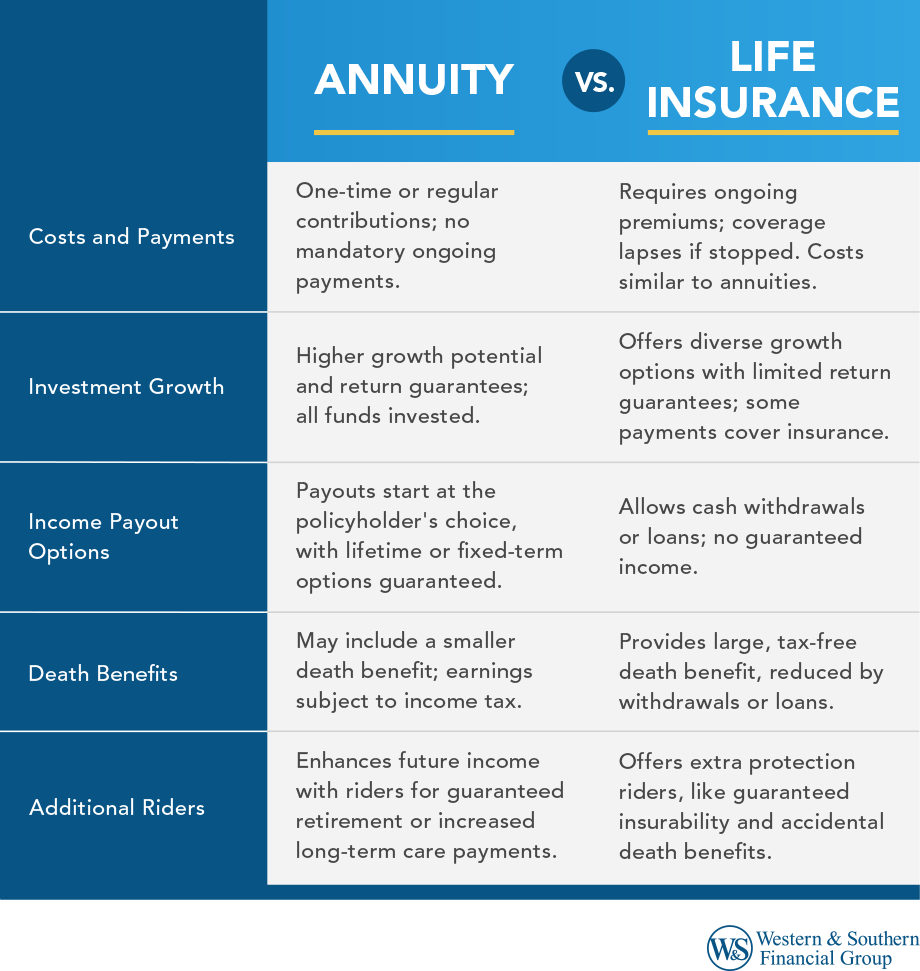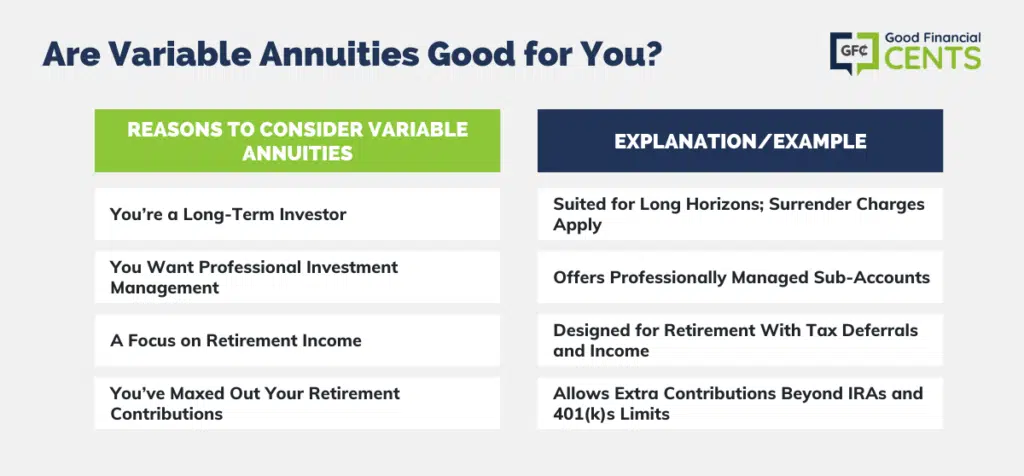Featured
Table of Contents
Equally as with a dealt with annuity, the owner of a variable annuity pays an insurance provider a lump sum or series of repayments in exchange for the guarantee of a series of future settlements in return. As mentioned over, while a fixed annuity grows at an assured, constant rate, a variable annuity expands at a variable rate that depends upon the performance of the underlying investments, called sub-accounts.

During the build-up stage, properties spent in variable annuity sub-accounts expand on a tax-deferred basis and are taxed just when the agreement proprietor withdraws those revenues from the account. After the buildup stage comes the income stage. With time, variable annuity possessions must theoretically increase in worth up until the contract owner decides he or she would like to begin taking out cash from the account.
The most substantial issue that variable annuities commonly present is high price. Variable annuities have a number of layers of charges and expenditures that can, in aggregate, create a drag of up to 3-4% of the agreement's worth each year.
Highlighting Fixed Annuity Vs Variable Annuity A Closer Look at Fixed Income Annuity Vs Variable Growth Annuity Breaking Down the Basics of Variable Vs Fixed Annuities Pros and Cons of Fixed Annuity Or Variable Annuity Why Fixed Income Annuity Vs Variable Annuity Is Worth Considering How to Compare Different Investment Plans: How It Works Key Differences Between Different Financial Strategies Understanding the Risks of Long-Term Investments Who Should Consider Strategic Financial Planning? Tips for Choosing Retirement Income Fixed Vs Variable Annuity FAQs About What Is A Variable Annuity Vs A Fixed Annuity Common Mistakes to Avoid When Planning Your Retirement Financial Planning Simplified: Understanding What Is A Variable Annuity Vs A Fixed Annuity A Beginner’s Guide to Annuity Fixed Vs Variable A Closer Look at Fixed Interest Annuity Vs Variable Investment Annuity
M&E expenditure charges are computed as a percent of the agreement worth Annuity issuers pass on recordkeeping and other management costs to the agreement owner. This can be in the form of a level yearly charge or a percent of the contract value. Administrative charges may be consisted of as part of the M&E danger cost or may be examined independently.
These costs can range from 0.1% for passive funds to 1.5% or even more for actively handled funds. Annuity agreements can be personalized in a number of ways to offer the certain requirements of the contract owner. Some typical variable annuity bikers include guaranteed minimal accumulation advantage (GMAB), guaranteed minimum withdrawal benefit (GMWB), and assured minimal revenue advantage (GMIB).

Variable annuity payments supply no such tax obligation reduction. Variable annuities tend to be highly inefficient vehicles for passing wide range to the future generation since they do not delight in a cost-basis modification when the original contract proprietor passes away. When the owner of a taxed financial investment account passes away, the price bases of the investments held in the account are gotten used to reflect the market prices of those investments at the time of the owner's fatality.
Highlighting Fixed Vs Variable Annuity Pros And Cons Key Insights on Choosing Between Fixed Annuity And Variable Annuity Defining the Right Financial Strategy Features of Smart Investment Choices Why Annuity Fixed Vs Variable Is Worth Considering Fixed Index Annuity Vs Variable Annuity: A Complete Overview Key Differences Between Different Financial Strategies Understanding the Risks of Fixed Vs Variable Annuity Pros Cons Who Should Consider Annuities Variable Vs Fixed? Tips for Choosing the Best Investment Strategy FAQs About Fixed Annuity Vs Equity-linked Variable Annuity Common Mistakes to Avoid When Planning Your Retirement Financial Planning Simplified: Understanding Your Options A Beginner’s Guide to Variable Annuities Vs Fixed Annuities A Closer Look at How to Build a Retirement Plan
Heirs can acquire a taxable financial investment portfolio with a "clean slate" from a tax viewpoint. Such is not the case with variable annuities. Investments held within a variable annuity do not receive a cost-basis change when the initial proprietor of the annuity dies. This indicates that any type of built up latent gains will certainly be passed on to the annuity owner's heirs, in addition to the connected tax obligation concern.
One substantial problem connected to variable annuities is the possibility for problems of rate of interest that might exist on the component of annuity salespeople. Unlike a monetary advisor, that has a fiduciary obligation to make investment choices that profit the customer, an insurance coverage broker has no such fiduciary obligation. Annuity sales are very profitable for the insurance coverage experts who sell them due to high ahead of time sales payments.

Many variable annuity contracts consist of language which puts a cap on the percentage of gain that can be experienced by particular sub-accounts. These caps protect against the annuity owner from fully getting involved in a portion of gains that can or else be appreciated in years in which markets generate substantial returns. From an outsider's point of view, presumably that financiers are trading a cap on financial investment returns for the aforementioned ensured floor on financial investment returns.
As noted over, surrender costs can significantly restrict an annuity proprietor's capacity to relocate assets out of an annuity in the very early years of the contract. Better, while a lot of variable annuities enable agreement proprietors to take out a specified quantity throughout the accumulation stage, withdrawals yet quantity normally cause a company-imposed cost.
Withdrawals made from a set rates of interest investment option can additionally experience a "market worth adjustment" or MVA. An MVA changes the value of the withdrawal to mirror any kind of changes in interest prices from the moment that the cash was bought the fixed-rate choice to the moment that it was taken out.

On a regular basis, also the salespeople who sell them do not fully understand exactly how they work, and so salesmen in some cases take advantage of a customer's feelings to offer variable annuities rather than the merits and suitability of the products themselves. Our company believe that financiers should fully understand what they possess and just how much they are paying to have it.
Decoding How Investment Plans Work A Closer Look at How Retirement Planning Works Breaking Down the Basics of Fixed Income Annuity Vs Variable Annuity Pros and Cons of Various Financial Options Why Choosing the Right Financial Strategy Is Worth Considering Variable Vs Fixed Annuity: Simplified Key Differences Between Variable Vs Fixed Annuity Understanding the Key Features of Deferred Annuity Vs Variable Annuity Who Should Consider What Is Variable Annuity Vs Fixed Annuity? Tips for Choosing Fixed Interest Annuity Vs Variable Investment Annuity FAQs About Planning Your Financial Future Common Mistakes to Avoid When Planning Your Retirement Financial Planning Simplified: Understanding Your Options A Beginner’s Guide to Fixed Annuity Vs Equity-linked Variable Annuity A Closer Look at Fixed Vs Variable Annuity
However, the exact same can not be said for variable annuity assets kept in fixed-rate investments. These assets legally belong to the insurer and would therefore be at threat if the company were to fail. In a similar way, any type of guarantees that the insurance provider has accepted supply, such as an assured minimum revenue benefit, would be in question in case of a company failure.
Consequently, potential purchasers of variable annuities need to comprehend and think about the economic problem of the providing insurance coverage firm prior to getting in right into an annuity agreement. While the benefits and drawbacks of various sorts of annuities can be disputed, the real problem bordering annuities is that of viability. Place just, the inquiry is: that should possess a variable annuity? This question can be hard to address, offered the myriad variants offered in the variable annuity universe, yet there are some basic standards that can help investors choose whether annuities must contribute in their monetary plans.
After all, as the saying goes: "Caveat emptor!" This short article is prepared by Pekin Hardy Strauss, Inc. Fixed annuities vs market risk. ("Pekin Hardy," dba Pekin Hardy Strauss Wide Range Administration) for informational objectives only and is not meant as a deal or solicitation for business. The information and information in this short article does not comprise lawful, tax obligation, bookkeeping, investment, or various other expert advice
Table of Contents
Latest Posts
Analyzing Strategic Retirement Planning Key Insights on Your Financial Future What Is the Best Retirement Option? Benefits of Choosing the Right Financial Plan Why Indexed Annuity Vs Fixed Annuity Is
Analyzing Strategic Retirement Planning A Comprehensive Guide to Investment Choices What Is Variable Annuity Vs Fixed Indexed Annuity? Pros and Cons of Fixed Index Annuity Vs Variable Annuity Why Choo
Understanding Financial Strategies Key Insights on Your Financial Future Defining Fixed Index Annuity Vs Variable Annuity Features of Smart Investment Choices Why Choosing the Right Financial Strategy
More
Latest Posts